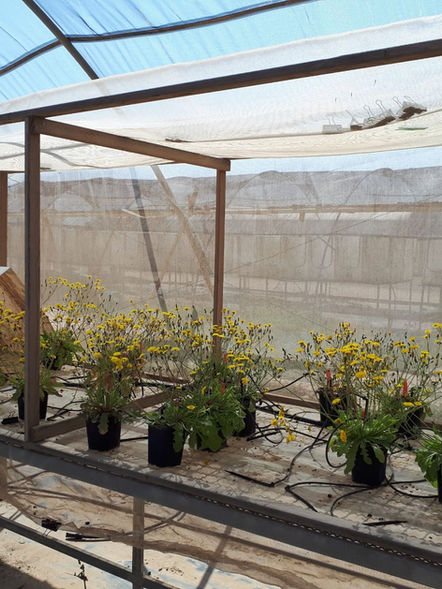
SELECTION ON DISPERSAL TRAITS IN FRAGMENTED LANDSCAPES
Variation in functional traits in general, and in dispersal-related traits in particular, has many sources and consequences. We conduct several research projects in which we quantify, analyze and explore multi-level variation in seed dispersal traits in relation to a set of hypothesized selection pressures by the physical, biological and genetical environment.
a. In the first phase of this research project, we investigated the evolution and expression of plant dispersal strategies in fragmented landscapes. This topic has received decent theoretical treatment, but hardly any empirical work followed that. We tested the hypothesis that position along environmental gradient interacts with landscape configuration and within-population processes in shaping the distribution of seed dispersal distances in two annual plants (Geropogon hybridus and Crepis sancta). The evidence so far indicate that isolated populations host individuals equipped with better dispersal mechanisms than individuals in less isolated populations (Chen et al. 2020, Dener et al. 2021). These findings agree more with spatial sorting as a dominant mechanism which affects dispersal traits rather than selection for reduced dispersal in isolated population. This project inspired us to develop a model for analyzing the effects of fragmentation, as a dynamic process, on dispersal strategies. More specifically, we investigate whether and how dispersal kernels of a sessile organism evolve in response to a dynamic fragmentation process. We found that the evolving dispersal kernel may vary as a function of fragmentation level, fragmentation rate, mutation scenarios and the initial dispersal kernel.
Collaborators
Selected papers
-
May, F., Giladi, I., Ristow, M., Ziv, Y. and Jeltsch, F. 2013. Plant functional trait respond to interacting gradients of precipitation and habitat fragmentation. Perspectives in Plant Ecology, Evolution and Systematics. 15:304-318.
-
Chen S.C. , Dener, E., Altman, A., Chen, F. and Giladi, I. 2020. Effect of habitat fragmentation on seed dispersal ability of a wind-dispersed annual in an agroecosystem. Agriculture, Ecosystems and Environment 304: 107138.
-
Dener, E., Ovadia, O., Shemesh, H., Altman, A., Chen, S.C., and Giladi, I. 2021. Direct and Indirect effects of fragmentation on seed dispersal in a fragmented agricultural landscape. Agriculture, Ecosystems and Environment. 309: 107273.
-
Greenbaum, G., Dener, E. and Giladi, I. 2022. Evolution of dispersal kernels under rapid fragmentation. Interface.









